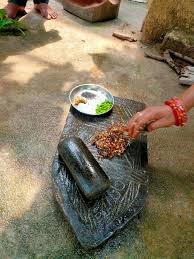
Mayurbhanj Red Ant Chutney

06.01.2024
Mayurbhanj Red Ant Chutney , Daily Current Affairs , RACE IAS : Best IAS Coaching in Lucknow
|
For Prelims:About Mayurbhanj's Red Ant Chutney,Specialty of Mayurbhanj's Red Ant Chutney,Red weaver ants,Importance |
Why In the news?
Recently, Red Ant Chutney from Mayurbhanj, Odisha has received the GI tag.
Important points:
- Similipal Kai Chutney, made from red weaver ants by the tribal people of Mayurbhanj district of Odisha, received the Geographical Identification tag on January 2, 2024.
- One kilogram of live Kai Pimpudi costs around Rs 400-600 and chutney costs up to Rs 1,000.
About Mayurbhanj's Red Ant Chutney:
- An application for registration in Class 30 under sub-section (1) of Section 13 of the Geographical Indications of Goods (Registration and Protection) Act, 1999 was applied for by Mayurbhanj Kai Society Limited in 2020.
- Red weaver ants are native to Mayurbhanj and are found in abundance throughout the year in the forests of every block area of the district including the Similipal Tiger Reserve.
- This delicious chutney is popular in the region due to its healing properties and is also considered important for the nutritional security of the tribal people.
- The indigenous people of Mayurbhanj are earning their living by selling red weaver ants and the chutney made from them.
- The indigenous people of Mayurbhanj district collect Kai Pimpudi (red weaver ant) from the forests to obtain it.
- About 500 tribal families are earning their living by collecting these insects and selling chutney made from them.
Process :
- Red weaver ants are collected and cleaned from the nests along with their eggs.
- After this, chutney is prepared by mixing and grinding salt, ginger, garlic and chili.
Specialty of Mayurbhanj's Red Ant Chutney:
- Scientists at OUAT Bhubaneswar analyzed red weaver ants and found that…
- It contains valuable proteins, calcium, zinc, vitamin B-12, iron, magnesium, potassium, sodium, copper, amino acids, etc.
- According to experts, consumption of the species can help boost the immune system and prevent diseases.
- Tribal healers also prepare a medicinal oil in which they dip ants along with pure mustard oil.
- After a month, this mixture is used as body oil for infants and by tribes to cure rheumatism, arthritis, ringworm and other diseases.
- This chutney is also useful in curing various health problems like stomach ache, dysentery, cold and fever.
- This food is also known to improve appetite as well as enhance eyesight naturally without improving it.
- It is also known to help promote healthy brain and nervous system development, fight depression, fatigue, and memory loss.
- Local people also consume it to stay fit and strong.
Red weaver ants:
- Red weaver ants form colonies with many nests on trees.
- Their nests are very strong against wind and impermeable to water.
- Each nest is made of leaves stitched together with silk produced by their larvae.
- They mostly reside on trees like mango, sal, jambu and jackfruit.
- Their nests are usually oval in shape and range in size from a single small folded and folded leaf to large nests with many leaves
- And their nests are more than half a meter in length.
- They feed on small insects and other invertebrates such as beetles, flies and hymenopterans.
- Their bites are painful, causing them to secrete irritating chemicals from their stomachs.
Type :
- Mostly there are three categories of members in their nests.
- Workers.
- Key workers.
- Queen.
- Workers and key workers are mostly orange in color.
- Workers are 5–6 mm long, with dominant workers being 8–10 mm long, with strong legs and large jaws and the queen being 20–25 mm long and greenish-brown.
Importance :
- Also recognized as biocontrol agents.
- Because they are aggressive and prey on most arthropods that enter their territory.
- They also protect a variety of tropical crops from insects by acting as an alternative to chemical pesticides.
Source:Down to earth